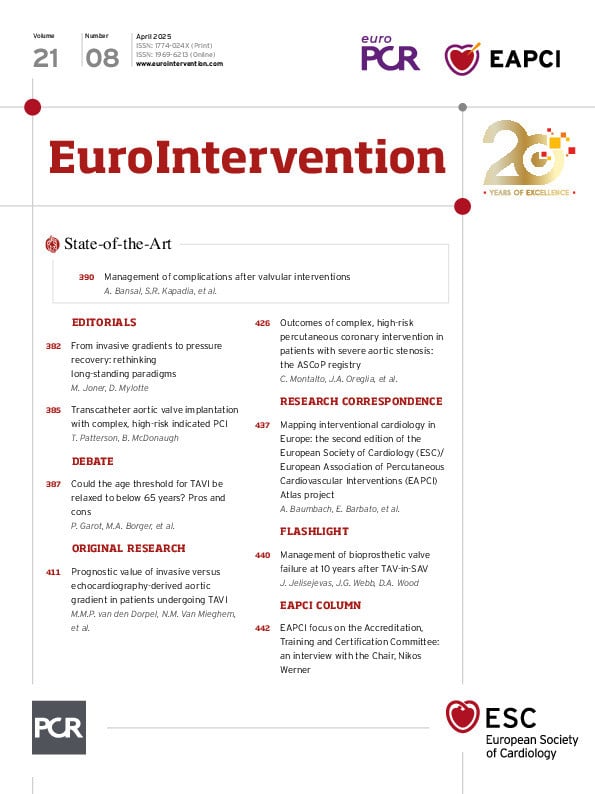Transcatheter aortic valve implantation (TAVI) has emerged to become the preferred therapeutic approach for the treatment of symptomatic severe aortic stenosis (AS) across the spectrum of perioperative risk categories relative to surgical aortic valve replacement (SAVR)1. Against this background, research related to the durability of TAVI prostheses and sustainability of the treatment effect is a recognised priority, with the scope to derive incremental knowledge in order to refine bioengineering concepts and drive potential valve design modifications23.
In this issue of EuroIntervention, van den Dorpel and colleagues examine the prognostic value of invasive and echocardiography-derived transvalvular gradients before and after TAVI with two differing transcatheter heart valve (THV) designs, the intra-annular balloon-expandable (BEV) SAPIEN (Edwards Lifesciences) and the self-expanding (SEV) Evolut (Medtronic) valve, after propensity score matching in a retrospective cohort of 1,227 patients (436 SAPIEN 3 and Evolut matched pairs)4. All-cause mortality was significantly associated with invasive gradients but not with echocardiography-derived gradients from 30 days to 2 years post-TAVI. Using a spline curve regression analysis, the authors found an invasive gradient of >10 mmHg to best...
Sign up for free!
Join us for free and access thousands of articles from EuroIntervention, as well as presentations, videos, cases from PCRonline.com

